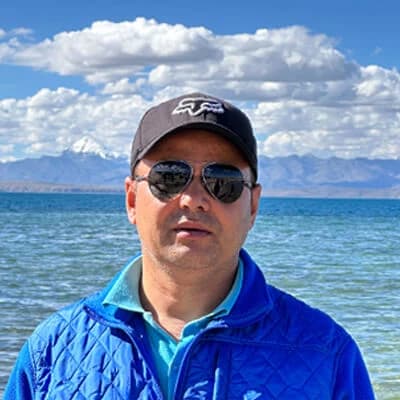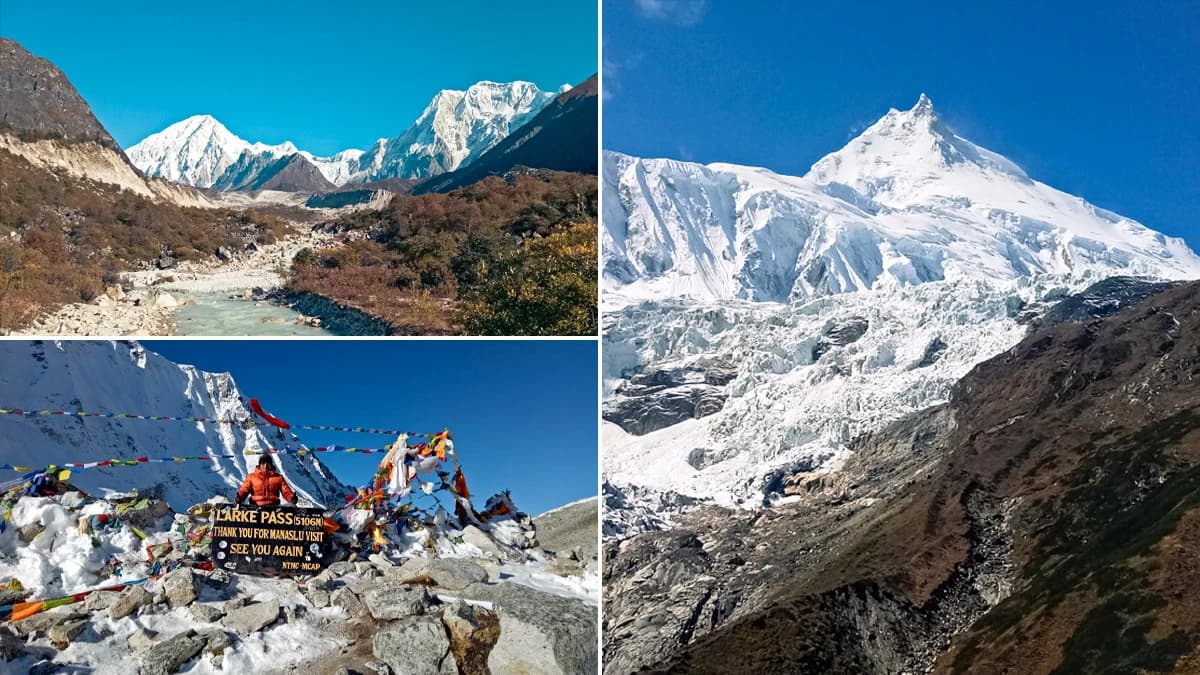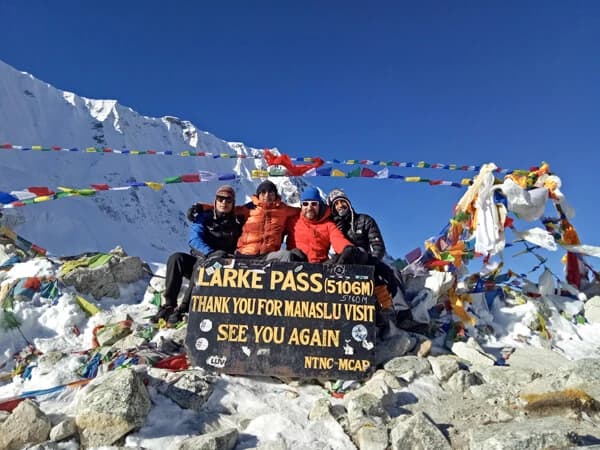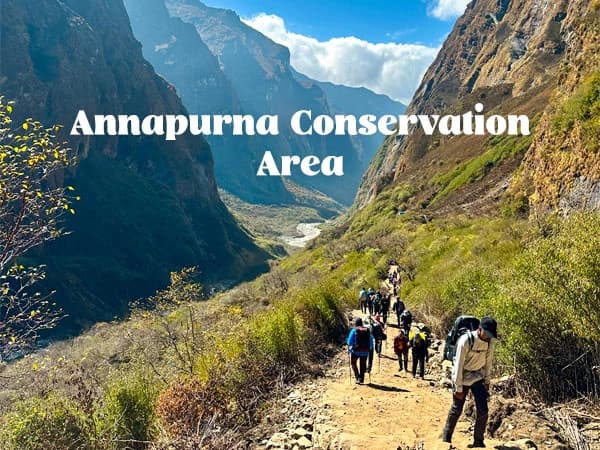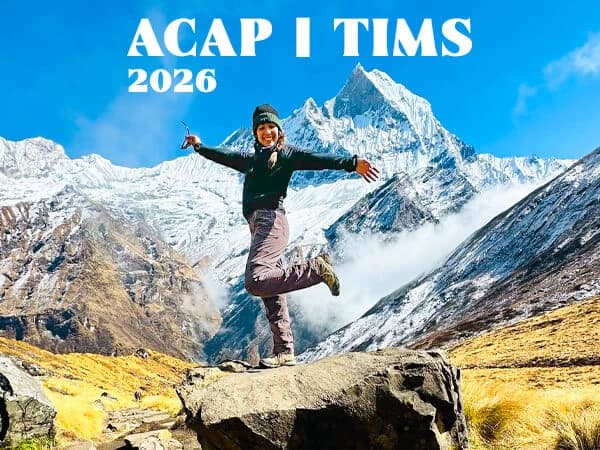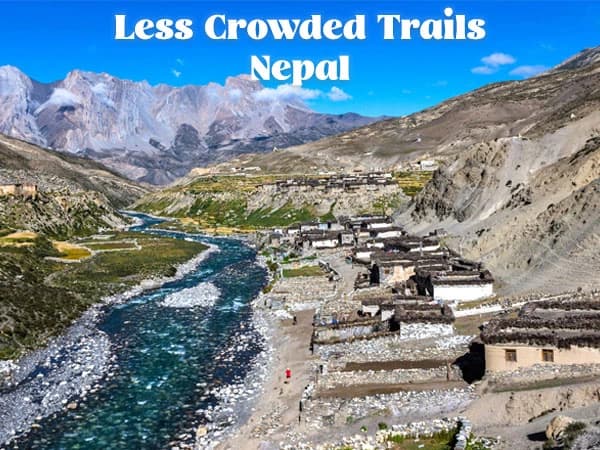Allow yourself into the wild beauty of the Himalayas-the Manaslu Circuit Trek, a once-in-one-lifetime journey to some of Nepal's best-kept secrets.
Manaslu Circuit Trek Permits: Costs, Rules, and the Guided Experience
The Manaslu Circuit Trek is a great journey into the unhindered beauty of the Nepal Himalaya. This is a trek to the most remote parts of Nepal, with breathtaking views of Mt. Manaslu, rich cultural exploration, and an exciting experience while crossing the Larkya La Pass. Ahead of this, it is very critical to understand the permitting process before making this journey.
These permits not only regulate access but are important in preserving this area in its natural condition. The guide below outlines whether to trek solo or take a guided trek, what type of permits are needed, and how much each permit will actually set you back, while it shows you why you'll want to trek with a guide.
What Makes the Manaslu Circuit Special?
Manaslu Circuit Trek has remained out of the limelight compared to other famous treks in Nepal. This is a great round of Mount Manaslu, the eighth highest peak in the world, which lies at 8,163 meters above sea level. Varied landscapes the trail goes through include lush green valleys, tough mountain terrain, and charming villages. You come across rushing Gurung and Tibetan communities, learning about their prosperous traditions and styles of living.
This ideal walk will enable one to combine adventure with culture. It is even more attractive because this region lies secluded, and this enables it to be peaceful and serene. However, the route lying in a restricted area means that permits are compulsory for preserving the natural and cultural heritage of the region.
Can You Trek Solo in Manaslu?
A trekking adventure for those who are alone, however, it's not the best option; the Nepalese government has banned solo trekking in this region to ensure safety and control tourism. Solo trekking is also not allowed in Manaslu due to the challenging terrain that includes altitude and a lack of infrastructures in remote areas.
You do require at least two trekkers in a group and the compulsorily escorted service of a licensed guide. This shall be for your safety and conservation of the fragile environment and culture. It is he who provides the much-needed support in navigation, first aid, and insights into the culture that make your journey rewarding and hassle-free.
Manaslu Circuit Trek Permit
To trek the Manaslu Circuit, obtaining the correct permits is a must; this regulates access to the restricted area and ensures that trekkers act responsibly. For this, there is basically a requirement for three different permits:
Manaslu Restricted Area Permit (RAP)
This is a very important permit for a trek as it enables one to enter the restricted area of the Manaslu section, where tourism is very consciously regulated to preserve the natural environment and special culture of this part of the country.
Manaslu Conservation Area Permit (MCAP)
This permit is taken care of by the National Trust for Nature Conservation and funds conservation and maintenance of the Manaslu region.
Annapurna Conservation Area Permit (ACAP)
This permit is required because the trek ends in the region of Annapurna. The permit helps fund conservation projects in the Annapurna area.
The permits are issued only through registered trekking agencies so that you go through with every regulation.
Manaslu Circuit Trek Permit Cost
Understanding the cost involved in permits is important for planning your trek. The cost of such permits varies based on the trekking season and type of permit:
Manaslu Restricted Area Permit (RAP)
- Peak Season-September-November: $100 for the first 7 days, then $15 per additional day.
- Off-Season-December–August: $75 for the first 7 days; $10 for each additional day.
Manaslu Conservation Area Protection Fee - MCAP
- Fixed rate of $30 per participant.
ACAP : Annapurna Conservation Area Permit
- Fixed rate of $30 per head.
The permit costs go toward conservation and management so that this region develops in a sustainable way. Of course, there are extra costs involved with a guide or porter, but these are very much worth the investment to make the experience both safer and more enjoyable.
Solo vs. Guided: What Are the Key Differences?
| Factor | Solo Trekking | Guided Trekking |
| Permits | Not Allowed | Fully Arranged by Guide/Agency |
| Safety | High Risk in Remote Areas | Safer with Local Knowledge |
| Navigation | Difficult without Local Insight | Guides Know the Route Perfectly |
| Cultural Insight | Limited Interaction | Rich Insights from Guides |
| Cost | Slightly Lower | Worth the Extra Expense |
Why Guided Treks Are Better
On each and every count, the guided trek has more added advantages in terms of added value to the experience. Actually, guides are trained professionals to understand the trails, weather conditions, and what to do in case of emergencies for making any trek safe and smooth.
The guides act also as cultural bridges, necessary to help an individual get along with the natives in their traditions and customs. Because this will save your time and bother, guides will organize permits, hotels, and meals. Besides, trekking with them means environmental respect, as they have strict rules on waste management.
While guided treks may cost more, the benefits far outweigh the extra expense. You’ll enjoy a worry-free journey and gain deeper insights into the region.
Sample Itinerary for the Manaslu Circuit Trek
| Day | Destination | Elevation(m) | Details |
|---|---|---|---|
| 1 | Kathmandu to Machha Khola | 900 | Drive through the scenic countryside. |
| 2 | Machha Khola Jagat | 1370 | Easy walk along rivers and forests, enter the restricted area. |
| 3 | Jagat to Deng | 1860 | Stunning views begin to emerge. |
| 4 | Deng to Namrung | 2630 | Experience Tibetan culture. |
| 5 | Namrung to Lho | 3180 | Scenic & Cultural Transition |
| 6 | Lho to Samagaon | 3520 | Panoramic Alpine Village Trail |
| 6 | Birendra Lake Hike | 3691 | Rest day for acclimatization. |
| 7 | Samagaon to Samdo | 3875 | Short hike with amazing landscapes. |
| 8 | Samdo to Dharamshala | 4460 | Prepare for the Larkya Pass. |
| 9 | Dharamshala to Bhimthang | 3,720 via 5,160 (Larkya Pass) | Challenging but rewarding day. |
| 10 | Bhimthang to Goa | 2515 | Descent through alpine forests. |
| 11 | Goa - Tilije - Kathmandu | 1400 | End of trek, drive back to Kathmandu. |
Conclusion
The Manaslu Circuit Trek surely has just about the right amount of adventure, with a rich cultural experience. The permit system is pretty manageable with proper information, while guided treks make certain not only safety but also an enhanced experience. By understanding the permits, costs, and benefits of guided treks, you’re set for an unforgettable Himalayan journey. Whether you’re a seasoned trekker or a first-timer, the Manaslu Circuit promises memories that last a lifetime.


